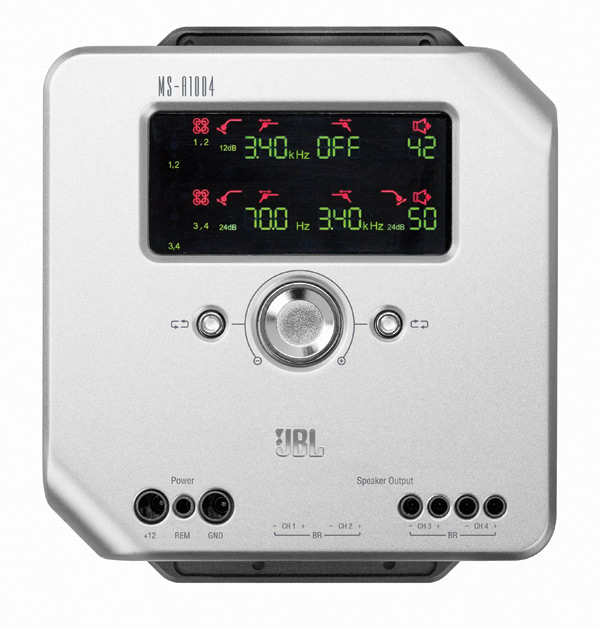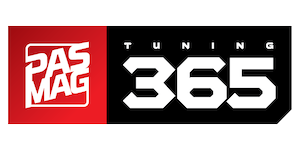Imagine a car audio amplifier that is small enough to fit virtually anywhere, has built-in digital signal processing, is easy to set up, has exceptional tuning capabilities, lots of power, doesn’t need a lot of current and sounds great. I know it sounds like a car audio nuts wet dream, but the fact is, it’s here now. The technologically advanced fantasy amplifier I just described is the new JBL MS-A1004. Rated at 100 watts x 4 into 4 or 2 ohms, with a retail price of US$549.00, it does all of the above and more. Interested? Then read on.
Features
The JBL MS-A1004 is a four channel full-range Class D amplifier. Like many other Class D full range amps, it has a very small footprint, but the JBL is even smaller than most, measuring only 7.2 x 8.3 x 2.75 inches. The inherent efficiency of Class D operation means less heat sink is required, thus the chassis size can shrink, without reducing power output. But what makes this amplifier so unique really has nothing to do with size or efficiency. This amplifier incorporates full DSP control of all of the usual pre-amp functions, and it does so without any need for a complicated computer connection or tricky menus and sub menus. The MS-A1004 has what may be the most intuitive and logical user interface of any DSP powered amplifier I have ever seen. On the top of the amplifier is a large, legible multicolor display. Just below the display are two buttons, and a rotary control. These three simple controls allow you to make all of the adjustments and the display shows the changes you are making and which channels are affected. The interface has a simple elegance to it, and other DSP-powered products could learn a lot from how simply the JBL DSP is controlled. You can see at a glance where the crossovers are set, what the slopes are and which channels are doing what. Even properly setting up the input sensitivity has been greatly simplified, thanks to a supplied CD with a special signal on it. You simply put the amp into setup mode by pressing the two buttons simultaneously, and play the track at max volume and turn the gain pots until you get a green check mark on the display. Arrows illuminate to guide you on which way to go on the adjustment. It’s dead easy, and when you’re done the gains have been adjusted for maximum performance with your head unit.
The MS-A1004 will accept RCA input signal or high level inputs and if you have a car with an “intelligent” radio, such as many German makes and some GM models, there is even a built-in circuit that can be selected to trick your radio into thinking it’s still driving the speakers. The amplifier can be turned on via a traditional remote-on wire, or you can engage a signal sensing circuit to provide turn-on functions. Of course, the DSP controls all the crossover settings, and the MS-A1004 can be configured in all pass, high pass, low pass, or bandpass modes. The range of frequency adjustments are almost mind boggling, with 97 separate frequencies available, plus 3 different separately selectable crossover slopes. (-6, -12, and -24dB/Octave)
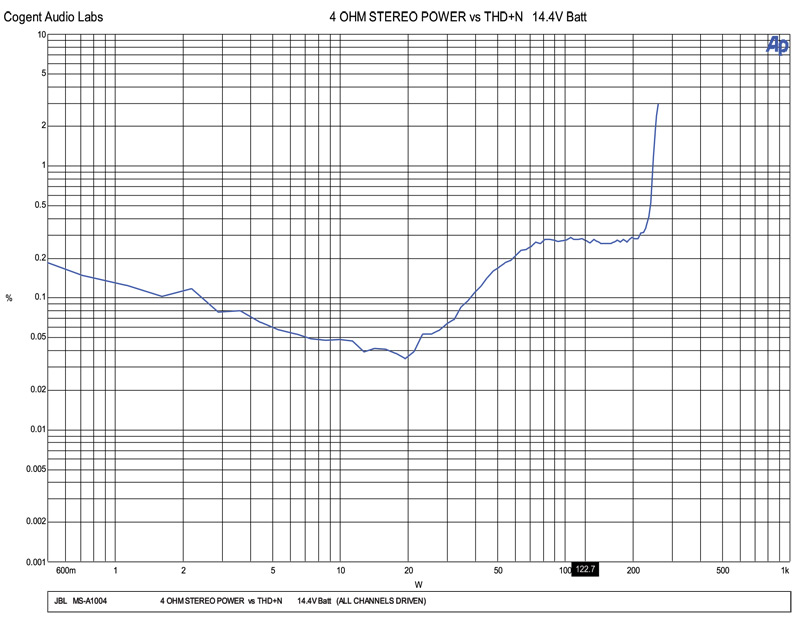 |
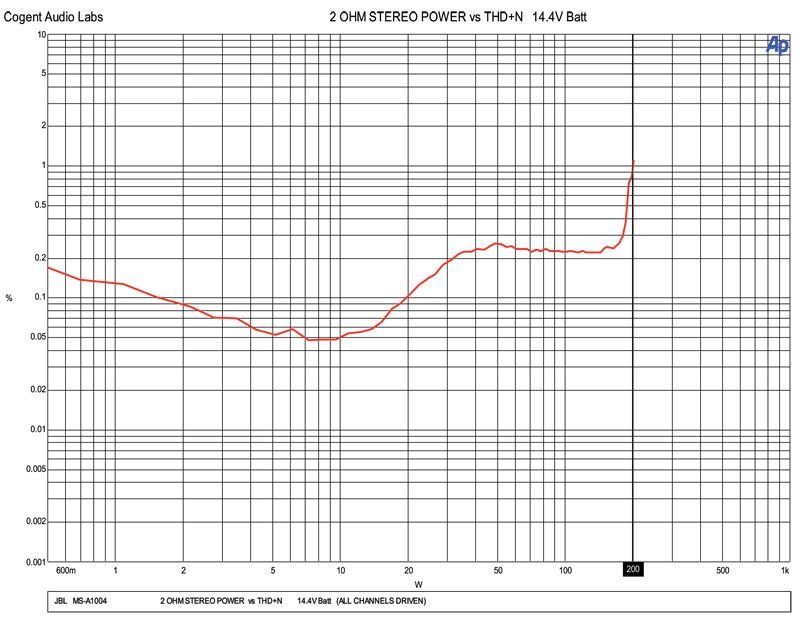 |
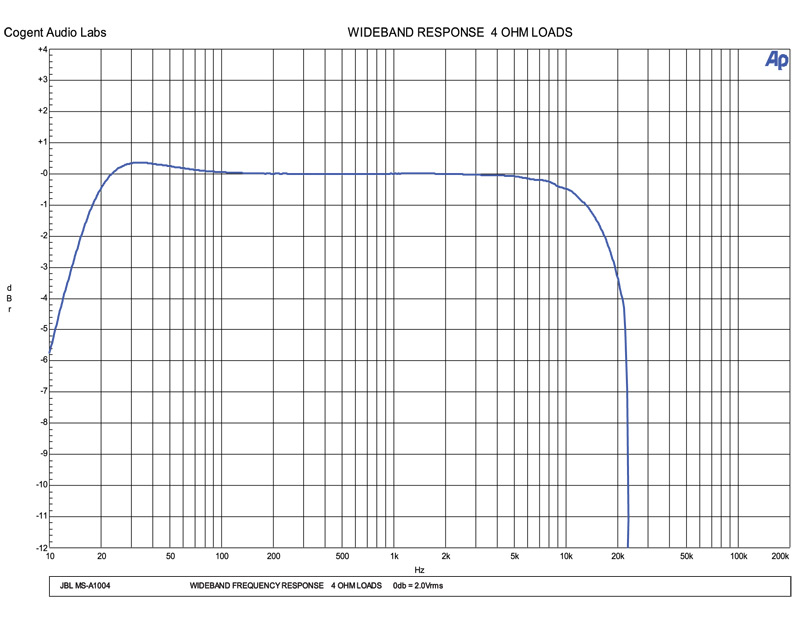 |
 |
The amplifier features an adjustable output level control as well, which provides level matching between subwoofer and components, or between front and rear channels. A set of RCA outputs are also included, which can be driven from selected channels using the built in input mixer or the signal can simply be a summation of channels 1 and 3, and 2 and 4. The outputs are full range, unfiltered.
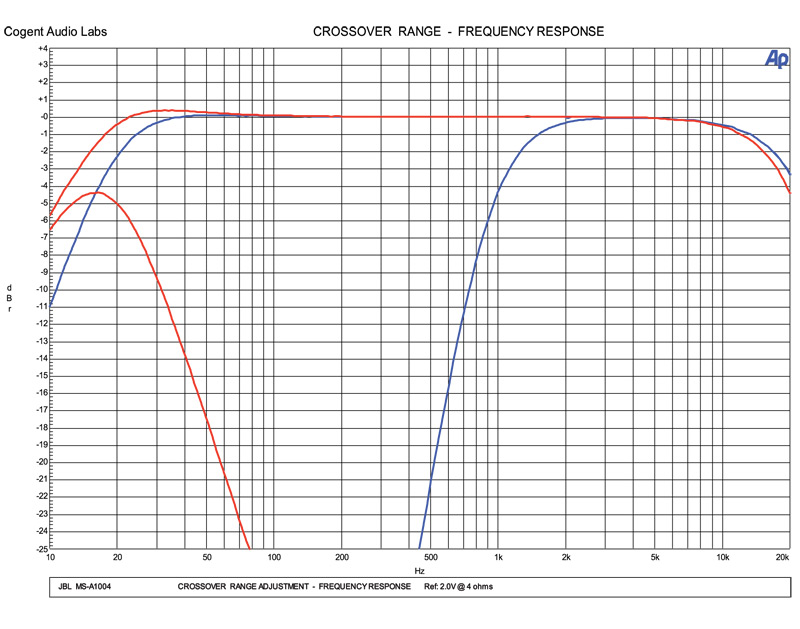 |
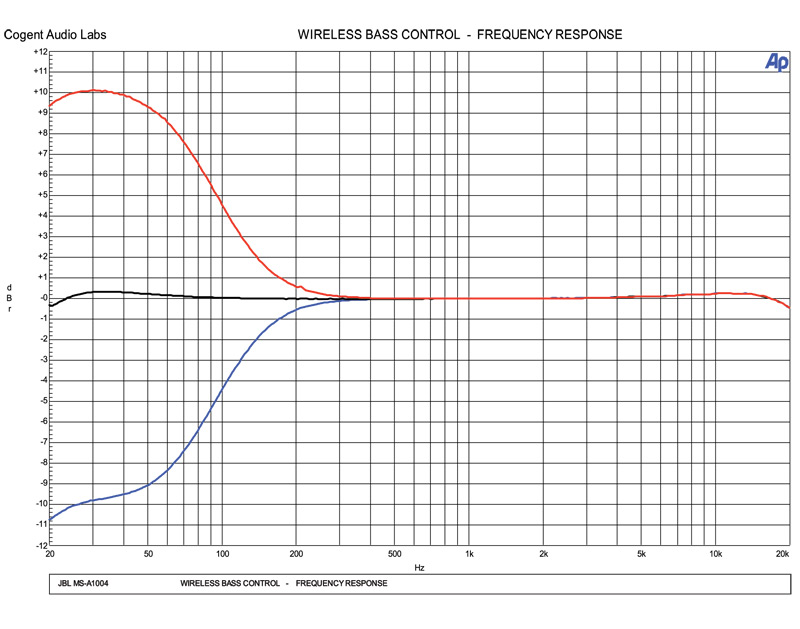 |
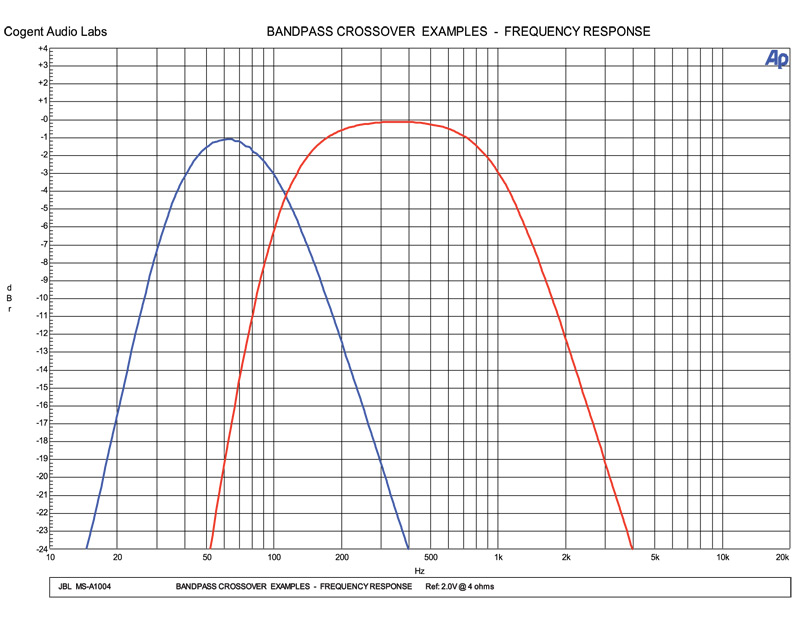 |
Lots of amplifiers have a bass level control. But the JBL MS-A1004 goes one better, with the first wireless bass level control. The optional MS-WBC is battery powered and also includes a plug that can be connected to a 12V source. The wireless controller transmits a signal only when the level knob is rotated so the included lithium battery will last a long time. This bass control is also unique in that it is designed to adjust a low frequency shelf filter, rather than just create boost at a given frequency. The design maintains accurate crossover frequency, and thereby helps to create the “bass up-front” illusion.
Listening
In my listening session the MS-A1004 proved to be more than capable as a power amplifier. I ran the amp with channels 3&4 bridged to a 4 ohm subwoofer system, and channels 1&2 running in stereo to my reference speakers. Initial setup was very simple and the well-written owner’s manual clearly explained how to accomplish the gain settings using the supplied CD. All the cool DSP trickery in the world isn’t much good if the amp doesn’t produce good power, but I’m happy to say that the JBL amp proved to have all the power I needed, with headroom to spare. The sonics of the amplifier were quite pleasing. I listened to it for several hours with all kinds of music, and made several adjustments while it was playing. I loved the control and precision the DSP provided, and it was actually fun to experiment with small adjustments and hear the differences. Bass was deep and authoritative and the midrange and upper registers sounded natural and quite transparent with good detail. The uppermost registers had a smooth, polite characteristic, without any of the harshness sometimes associated with full range Class D amplifiers. I noted that the stereo image was perhaps not quite as focused as I’m used to, but to be fair, in most cars a really impressive stereo image isn’t possible or important. When the session ended, I came away pretty impressed with the overall sonic performance of the MS-A1004.
Performance/Bench Measurements
On the test bench, the MS-A1004 exceeded the published power specifications, particularly at 2 ohms, where the amp made exactly double the rated power! Signal to noise was good for a DSP powered Class D amplifier, and in fact better than some analog amps I’ve measured. This is a serious accomplishment, and my hat is off to the engineering team. Wideband frequency response was slightly reduced, with the amp rolling off gently as the frequency approached the upper limit of audibility. The amplifier can be driven by virtually any source unit in existence, and has excellent thermal performance thanks to the high efficiency design, and a clever power reduction scheme that allows the amp to continue to play when others would simply shut off.
Conclusion
I’ll be the first one to admit that I’m generally not a fan of digital signal manipulation in my audio devices. When I first received this amp for testing, I struggled to remain open-minded and unbiased. But after listening to it and putting it through the paces on the test bench, I have to admit my fears were unnecessary. The amp sounds good, is a pleasure to use, and will fit almost anywhere. If you are a tweaker, technofile, or just someone who appreciates a well-designed, good sounding amp, check out the JBL MS-A1004 for yourself. For more information on the JBL car audio products and their worldwide dealers, visit www.jbl.com
Technical Data
The following power measurements were obtained using industry standard methods. (1kHZ @ 1.0% THD+N - Battery voltages shown +/- 0.2V)
Measrured Performance Specifications
|
Manufacturers Rated Power |
Actual Measured Power @ 1.0% THD+N @ 12.6V Battery |
Actual Measured Power @ 1.0% THD+N @ 14.4V Battery |
|
100 x 4 @ 4 ? |
94 x 4 @ 4 ? |
122 x 4 @ 4 ? |
|
100 x 4 @ 2 ? |
150 x 4 @ 2 ? |
200 x 4 @ 2 ? |
|
200 x 2 @ 4 ? |
308 x 2 @ 4 ? |
406 x 2 @ 4 ? |
|
Signal to Noise Ratio referenced to 2V output. (CEA-2006A) (1 watt @ 4 ohms) |
-79.1dBA |
|
Signal to Noise Ratio referenced to full output. |
-99.9dBA |
|
THD+N at rated 4 ohm power |
0.29% |
|
CEA-2006A rated 4 ohm Power (minimum power per channel developed over the entire intended audio bandwidth) |
100 Watts |
|
Maximum Efficiency at full 4 ohm power per ch. |
78.4% |
|
Maximum Efficiency at full 2 ohm power per ch. |
70.3% |
|
Efficiency at 10 watts per channel, 4 ohms |
53.4% |
|
Idle Current |
1.7A |
|
Input Sensitivity |
100mV- 15V |
|
Maximum Current @ full power, lowest rated impedance |
79.0A |
|
Frequency Response (-3dB) |
13Hz – 19.3kHz |
|
High Pass Crossover |
20Hz – 20kHz -6,-12,-24dB/Oct |
|
Low Pass Crossover |
20Hz – 20kHz -6,-12,-24dB/Oct |
|
Subsonic Filter |
Use low frequency highpass as above |
|
Bass Boost (optional) |
-10db to +10dB shelf filter, wireless adjustment
|
Related Articles
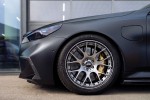 BBS Launches Two-Piece CH-R II Unlimited Wheel in 20–22 Inches
BBS Launches Two-Piece CH-R II Unlimited Wheel in 20–22 Inches
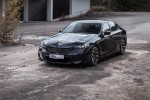 KW Releases V3s Compatible with BMW Air Suspension and EVs
KW Releases V3s Compatible with BMW Air Suspension and EVs
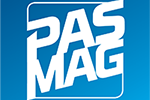 Lexus unveils all-electric LFA Concept
Lexus unveils all-electric LFA Concept
 Toyota unwraps GR GT supercar and GR GT3 racer
Toyota unwraps GR GT supercar and GR GT3 racer
 Genesis reveals first Magma production car and supercar concept
Genesis reveals first Magma production car and supercar concept
 Chopping Block: BMW Z4
Chopping Block: BMW Z4


